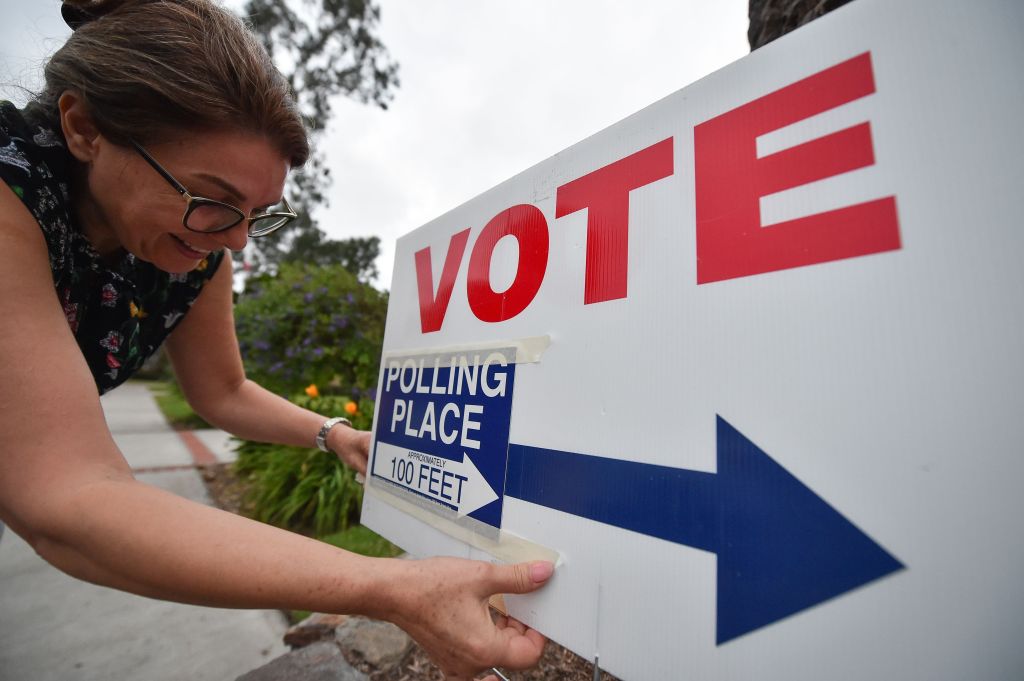
Here’s a bit of advice to help maintain your sanity over the next few weeks until Election Day: Just ignore the polls. Unless you’re a campaign professional or a gambler, you’re probably looking at them for the same reason the rest of us are: to know who’ll win. Or at least to feel like you know who’ll win. But they just can’t tell you that.
Back in 2016, Harry Enten, then at FiveThirtyEight, calculated the final polling error in every presidential election between 1968 and 2012. On average, the polls missed by 2 percentage points. In 2016, an American Association for Public Opinion Research postmortem found that the average error of the national polls was 2.2 points, but the polls of individual states were off by 5.1 points. In 2020, the national polls were off by 4.5 points, and the state-level polls missed, again, by 5.1 points.
You could imagine a world in which these errors are random and cancel one another out. Perhaps Donald Trump’s support is undercounted by 3 points in Michigan but overcounted by 3 points in Wisconsin. But errors often systematically favor one candidate or the other. In both 2016 and 2020, for instance, state-level polls tended to undercount Trump supporters. The polls overestimated Hillary Clinton’s margin by 3 points in 2016 and Joe Biden’s margin by 4.3 points in 2020.
In a blowout election, an error of a few points in one direction or another is meaningless. In the California Senate race, for example, Adam Schiff, a Democrat, is leading Steve Garvey, a Republican, by between 17 and 33 points, depending on the poll. Even a polling error of 10 points wouldn’t matter to the outcome of the race.
Too close to call
But that’s not where the presidential election sits. As of Thursday, The New York Times’ polling average had Kamala Harris leading Trump by 3 points nationally. That’s tight, but the seven swing states are tighter: Neither candidate is leading by more than 2 points in any of them.
Imagine the polls perform better in 2024 than they did in either 2016 or 2020: They’re off, remarkably, by merely 2 points in the swing states. Huzzah! That would be consistent with Harris winning every swing state. It would also be consistent with Trump winning every swing state. This is not some outlandish scenario. According to Nate Silver’s election model, the most likely electoral outcome “is Harris sweeping all seven swing states. And the next most likely is Trump sweeping all seven.”
Which is all to say: The polls can’t tell you the way in which they’re going to be wrong nor by how much. But that’s what matters now.
A race this tight is delightful for people who enjoy thinking about polling methodologies. My colleague Nate Cohn had a fascinating write-up last week of how polls are diverging based on whether pollsters are “weighting on recalled vote” or not. The short version is this: Pollsters are desperate to avoid the mistakes they made in 2016 and 2020, when they undercounted Trump supporters. So most pollsters are asking voters to recall who they voted for in 2020 and then using that information to make sure Trump voters are fully represented. Pollsters who do that are getting results that show a very 2020-like pattern in voting. Pollsters who don’t do that are seeing substantially different results.
But people are notoriously bad at recalling past votes. Using that data may just bias polls further. In a month or so, we’ll (hopefully) know which methodological choice was right. But until then, if you’re not a professional pollster, do you really need to be spending the fleeting minutes you have on this earth thinking about weighting on recalled votes? Call people you care about and tell them you love them. Take 10 deep breaths and watch where your mind wanders. Do literally anything else.
A very stable voter
Here’s the other reason you can safely tune out the daily polling news: The polls are remarkably, eerily stable.

















































